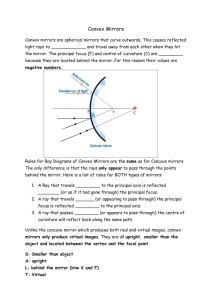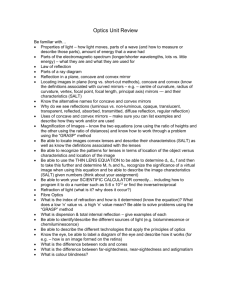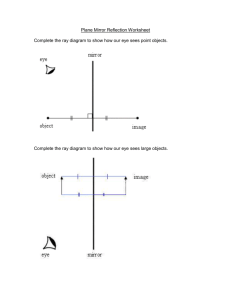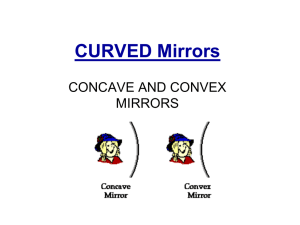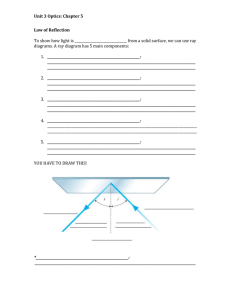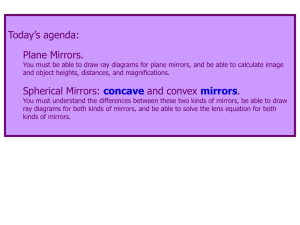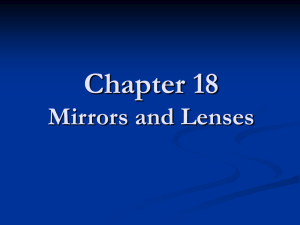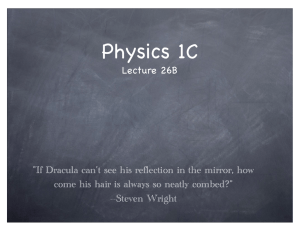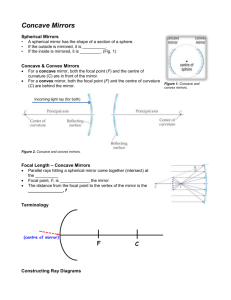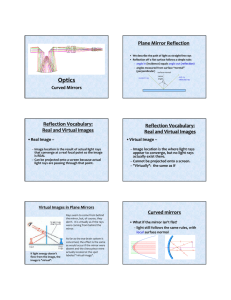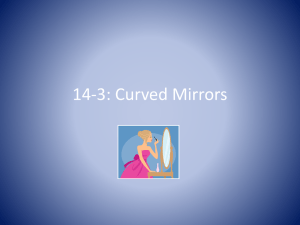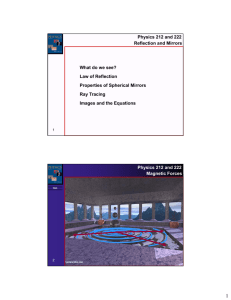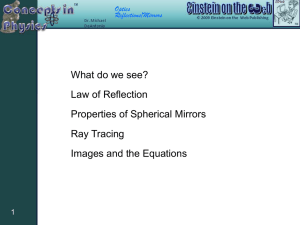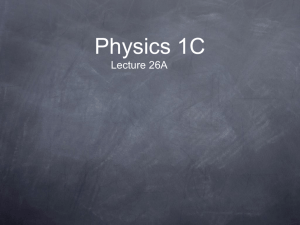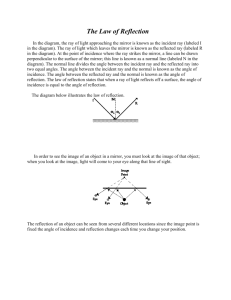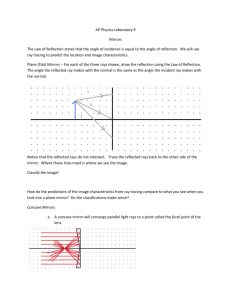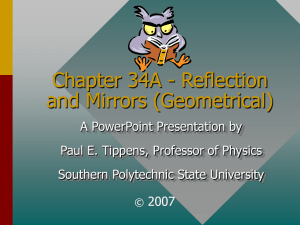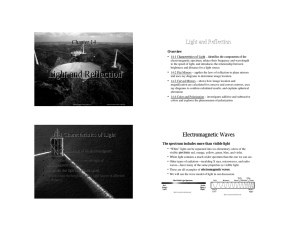Document
advertisement
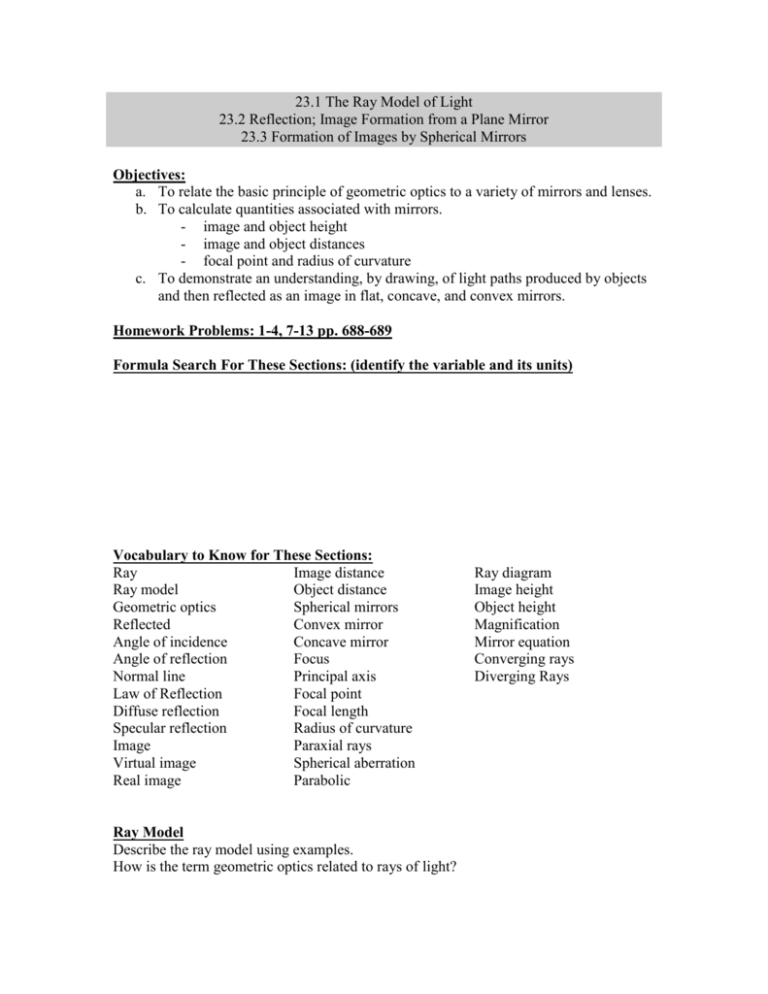
23.1 The Ray Model of Light 23.2 Reflection; Image Formation from a Plane Mirror 23.3 Formation of Images by Spherical Mirrors Objectives: a. To relate the basic principle of geometric optics to a variety of mirrors and lenses. b. To calculate quantities associated with mirrors. - image and object height - image and object distances - focal point and radius of curvature c. To demonstrate an understanding, by drawing, of light paths produced by objects and then reflected as an image in flat, concave, and convex mirrors. Homework Problems: 1-4, 7-13 pp. 688-689 Formula Search For These Sections: (identify the variable and its units) Vocabulary to Know for These Sections: Ray Image distance Ray model Object distance Geometric optics Spherical mirrors Reflected Convex mirror Angle of incidence Concave mirror Angle of reflection Focus Normal line Principal axis Law of Reflection Focal point Diffuse reflection Focal length Specular reflection Radius of curvature Image Paraxial rays Virtual image Spherical aberration Real image Parabolic Ray Model Describe the ray model using examples. How is the term geometric optics related to rays of light? Ray diagram Image height Object height Magnification Mirror equation Converging rays Diverging Rays Plane Mirror Draw and label a diagram that includes the terms – angle of incidence, angle of refraction, normal line. How could you prove the law of reflection? How do rough surfaces affect the law of reflection? Compare and contrast real and virtual images. Describe the relationship of image and object in a flat mirror. How tall a mirror do you need to see a reflection of your entire self? Spherical Mirrors Describe and give uses of convex mirrors. Describe and give uses of concave mirrors. How does the law of reflection apply to these types of mirrors? Use a diagram in your explanation. Draw and label a diagram that shows the position of the principal axis, focal point, focal length, radius of curvature, and the light ray path for a concave mirror. How do spherical aberrations occur? What is the relationship between the radius of curvature and focal point? What possible object/image positions occur in concave mirrors? Use a diagram to these situations. How can you use light rays to determine the position of the image? How do we determine if we see a real or virtual image? What relationships exist in the mirror equation? What relationships exist in the magnification equation? How are the sign conventions for these equations helpful in interpreting the image? What happens to your image as you get closer to a concave mirror? Why do you need to be close to a cosmetic mirror? Draw and label a diagram that shows the position of the principal axis, focal point, focal length, radius of curvature, and the light ray path for a convex mirror. Why are convex mirrors used in cars? What problem exists with the mirror used in cars? What possible object/image positions occur in convex mirrors? Use a diagram to these situations. For each homework problem write the formula you will use and any substitution and/or manipulation.
